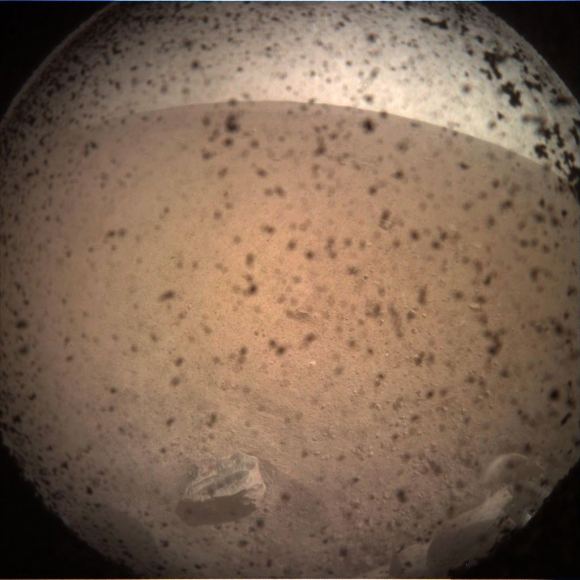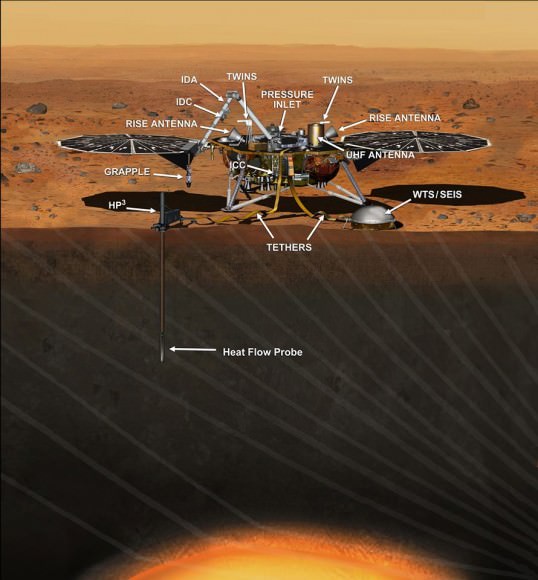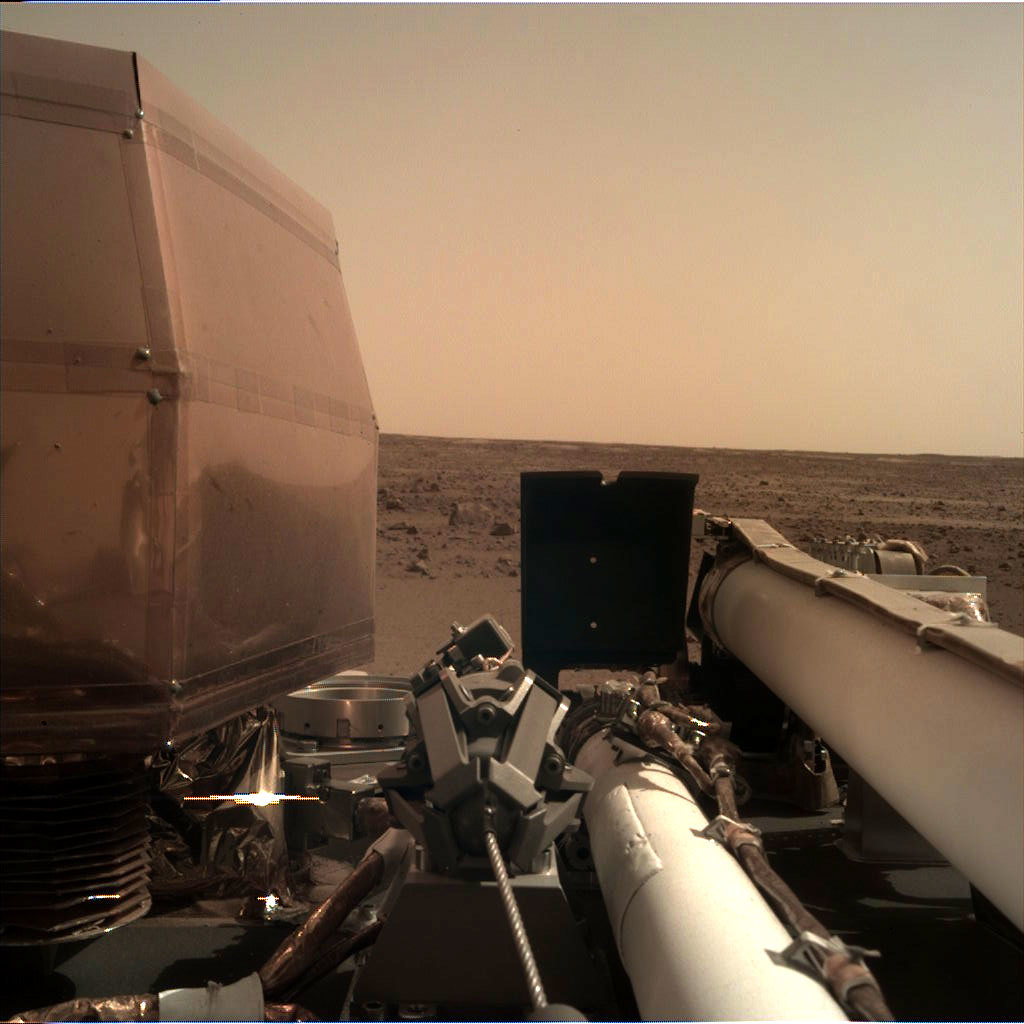Yesterday, NASA’s Interior Exploration using Seismic Investigations, Geodesy and Heat Transport (InSight) lander reached Mars after a seven months journey. NASA broadcast the landing live, showing the mission control team eagerly watching as the spacecraft entered the Martian atmosphere and began the nail-biting entry, descent and landing (EDL) process.
At exactly 11:52:29 am PST (2:52:59 pm EST) mission controllers received a signal via the Mars Cube One (MarCO) satellites that the lander had successfully touched down. About a minute later, InSight began to conduct surface operations, which involved the deployment of its solar arrays and prepping its instruments for research.
This process commenced 16 minutes after the lander touched down, and took another 16 minutes to complete. Prior to this, the lander was running off of its battery the entire time it was on the surface. This battery is capable of powering the lander for up to 16 hours, but the solar arrays are necessary if the mission is to have any longevity.
Aaah…soaking up the Sun with my solar panels. ? After a long flight, and thrilling #MarsLanding, it feels great to get a good stretch and recharge my batteries. (Like, literally.) It’s just what I’ll need to really start getting in tune with #Mars. https://t.co/yse3VEst3G pic.twitter.com/LpsiI0KNNz
— NASAInSight (@NASAInSight) November 27, 2018
While it took only about a half hour between InSight touching down and deploying its solar arrays, mission controllers were forced to wait for five and half hours to receive confirmation. This came at about 5:30 p.m. PST (8:30 p.m. EST) when the Mars Odyssey mission (which was orbiting Mars at the time) relayed the signals. As Tom Hoffman, InSight’s project manager at NASA’s Jet Propulsion Laboratory, said in a NASA press release:
“The InSight team can rest a little easier tonight now that we know the spacecraft solar arrays are deployed and recharging the batteries. It’s been a long day for the team. But tomorrow begins an exciting new chapter for InSight: surface operations and the beginning of the instrument deployment phase.”
InSight’s twin solar arrays, which are modeled on those used by NASA’s Phoenix Mars Lander, each measure 2.2. m (7 feet) in diameter when open. However, InSights arrays are slightly larger in order to provide more power output and increase structural strength, which will be necessary during the two years that it will be on the surface.
Despite Mars receiving less sunlight than Earth (owing to its greater distance from the Sun), the lander does not need much solar energy to operate. On a clear day, the panels will provide the lander with 600 to 700 watts of power, and can provide at least 200 to 300 watts in the event of a storm that will cover them with dust – which is a common occurrence on Mars.

The Mars Odyssey orbiter also relayed a pair of images that showed InSight’s landing site. One of these images (shown at top) was taken by the Instrument Deployment Camera (IDC), which is located on the lander’s robotic arm – aka. the Instrument Deployment Arm (IDA). It was taken shortly after the craft landed, which is why the camera’s transparent dust cover is still on (to prevent particulates kicked up during landing from settling on the camera’s lens).
The image showed the region where the InSight lander will be spending the next two years studying Mars’ interior and seismology. It also showed some the instruments that InSight will be relying on to do this, including its seismometer (left), grapple (center) and robotic arm (right). The other image (above) shows the area in front of the lander, where its instruments will be deployed.
Much like the first image taken just after the lander touched down, this image shows the area on the surface where the lander will be performing its science operations. It too was acquired using the lander’s Instrument Context Camera (ICC), which is mounted underneath its body. This image was acquired on November 26th, 2018, shortly after the first image was taken, and also showed speckles of dirt on the lens cap.

In the coming days, the mission team will be powering up the robotic arm and using its attached camera to snap photos of the ground so that engineers can decide where to place the mission’s scientific instruments – like the Seismic Experiment for Interior Structure (SEIS) seismometer and the Heat Flow and Physical Properties Probe (HP3).
It will be two to three months before those instruments are fully deployed and can begin collecting data that will be sent back to Earth. In the meantime, InSight will be studying its new home (Elysium Planitia) using its weather sensors and magnetometer to get better sense of its surroundings. Expect more updates in the near future!
And be sure to check out this video of the mission control team watching as InSight made its historic landing, courtesy of NASA-JPL:
Further Reading: NASA

